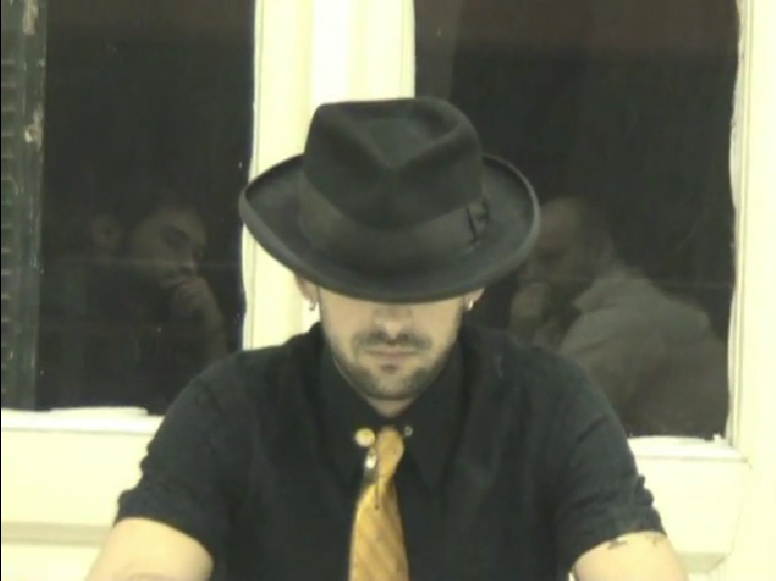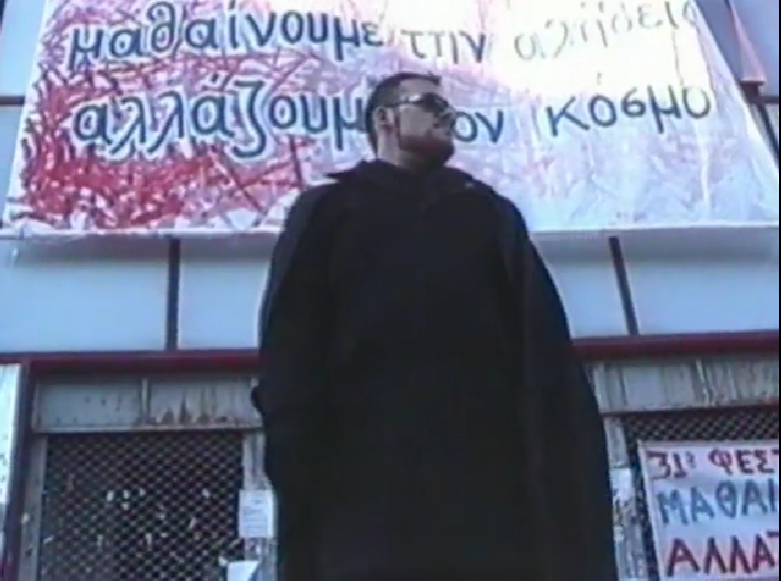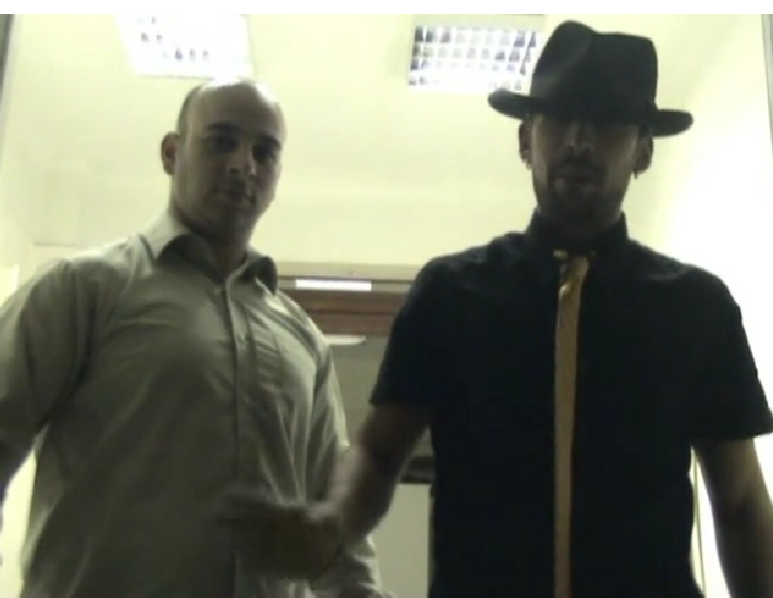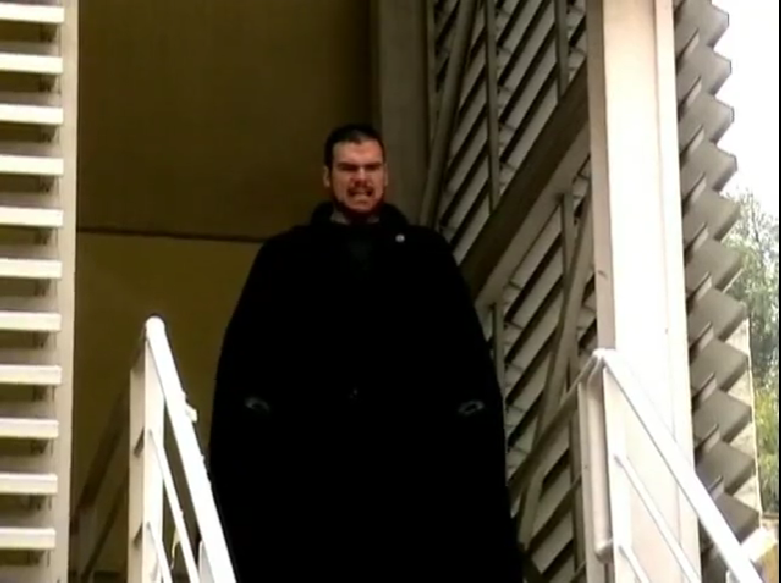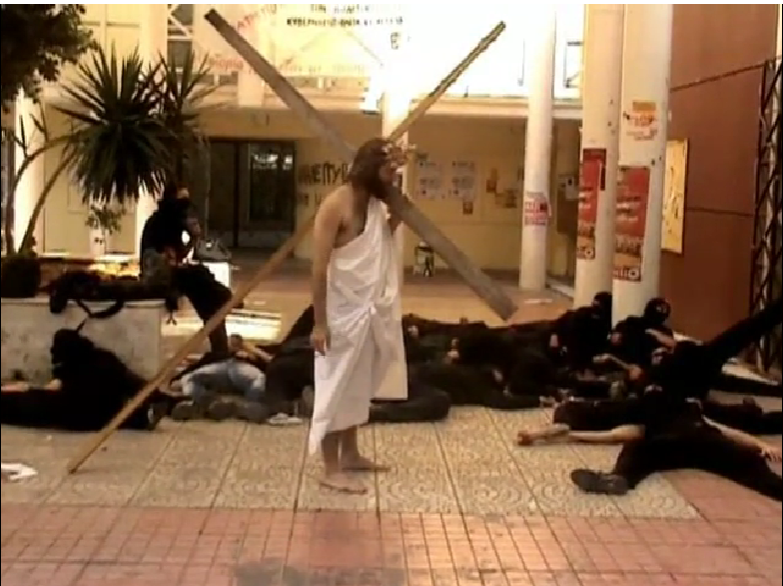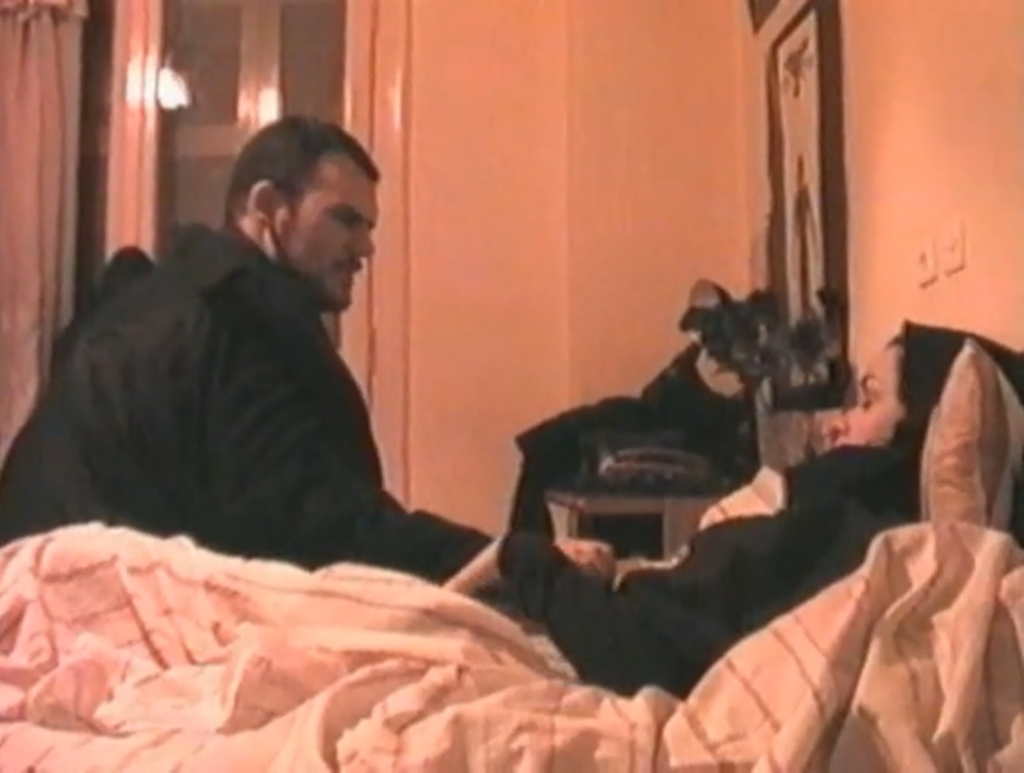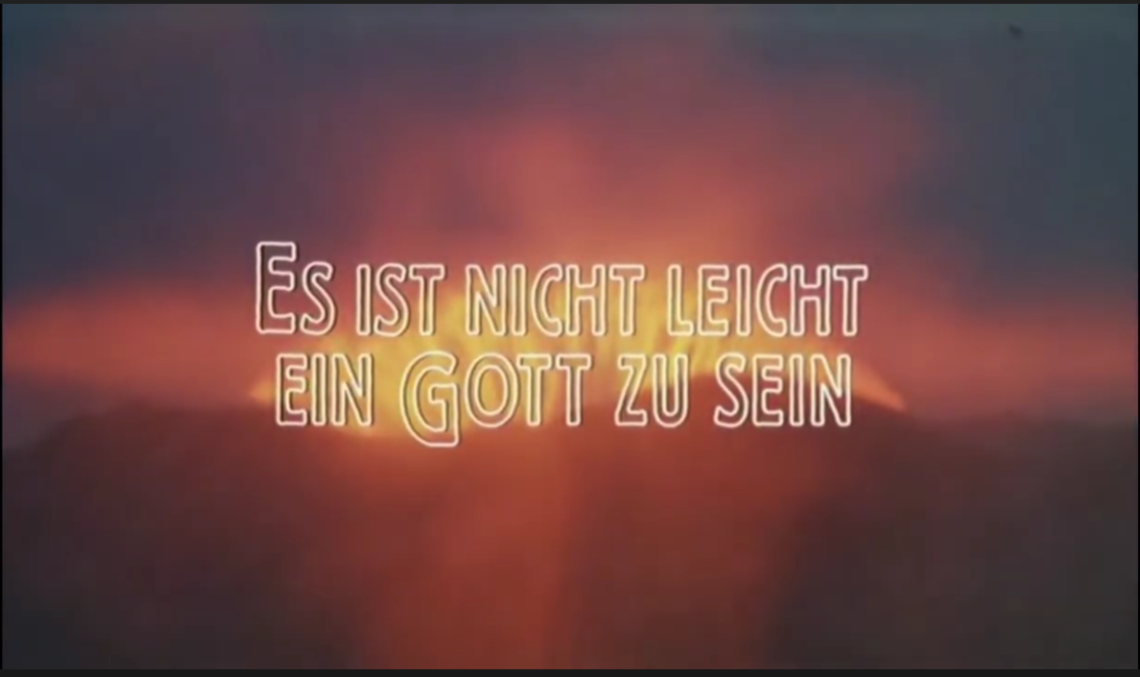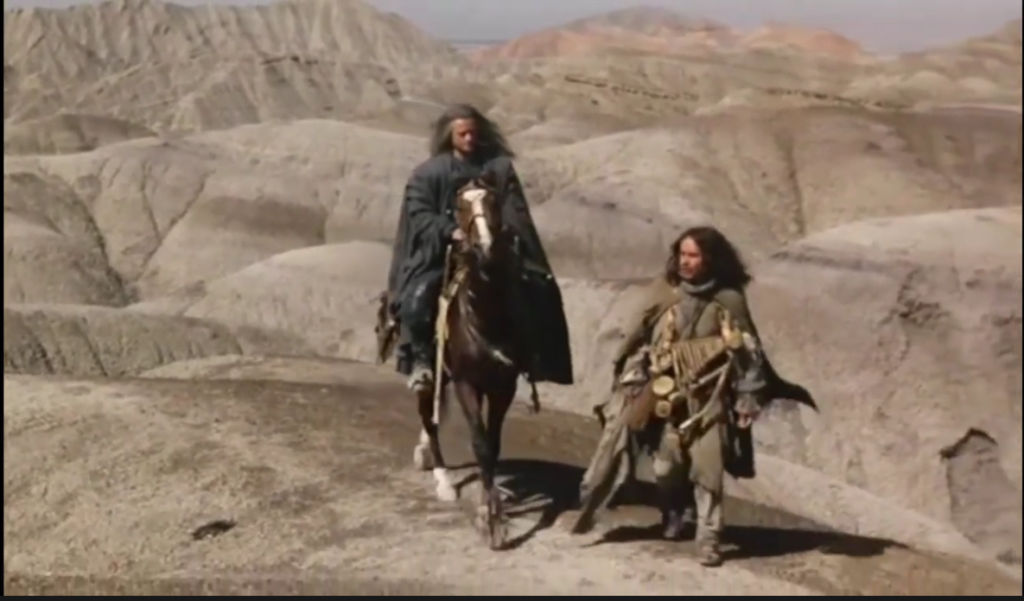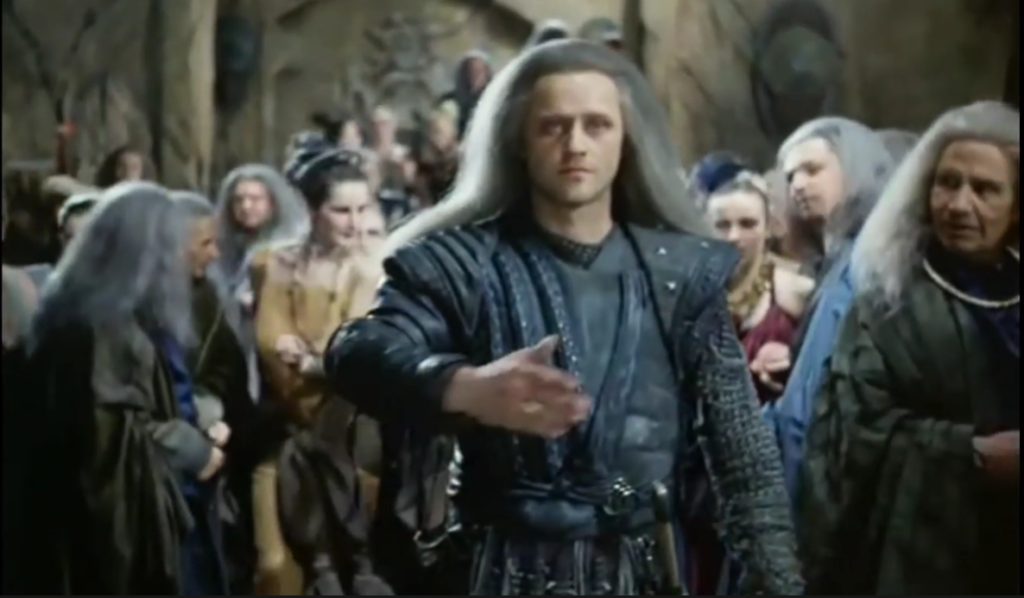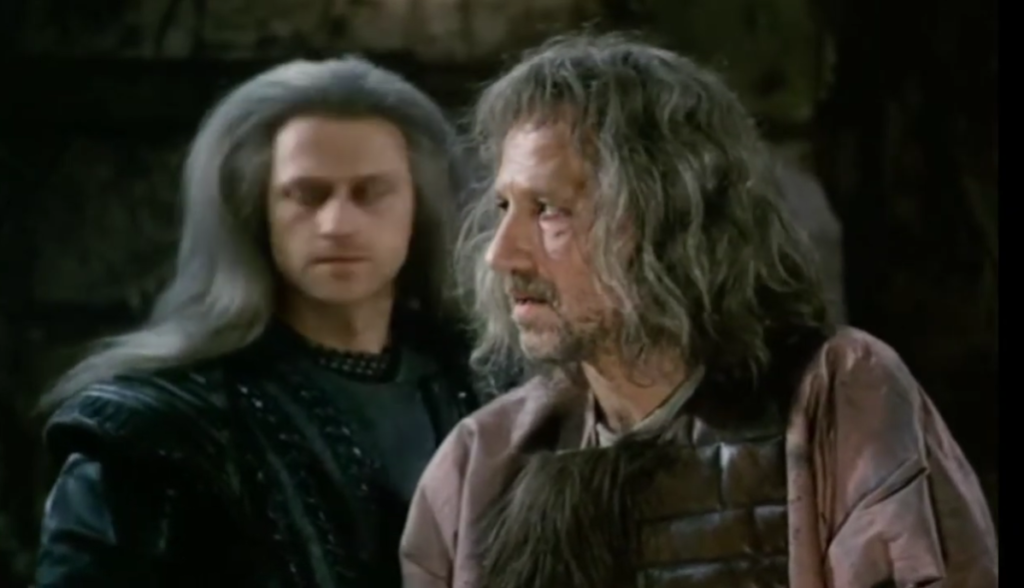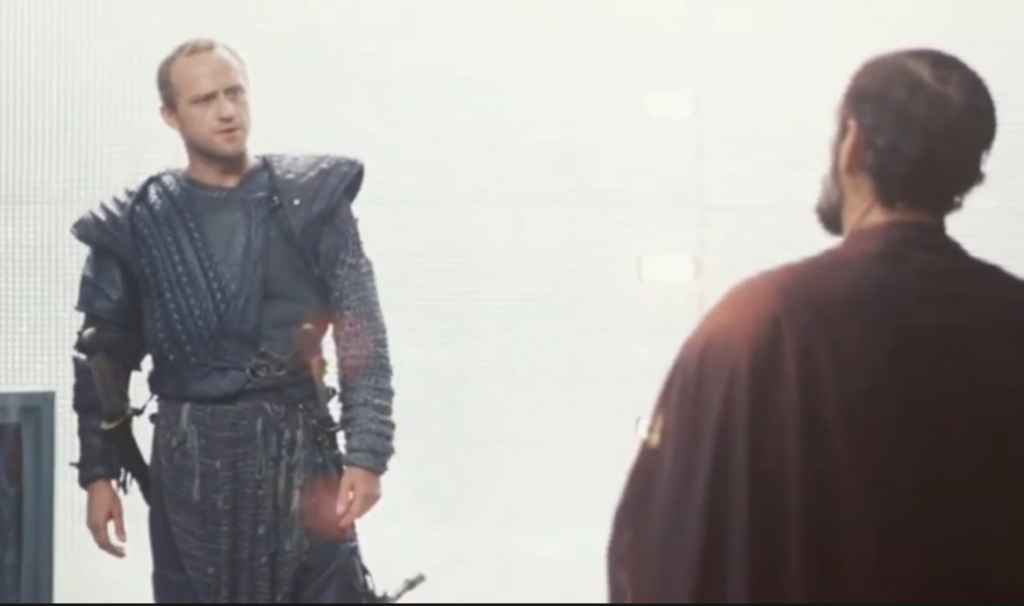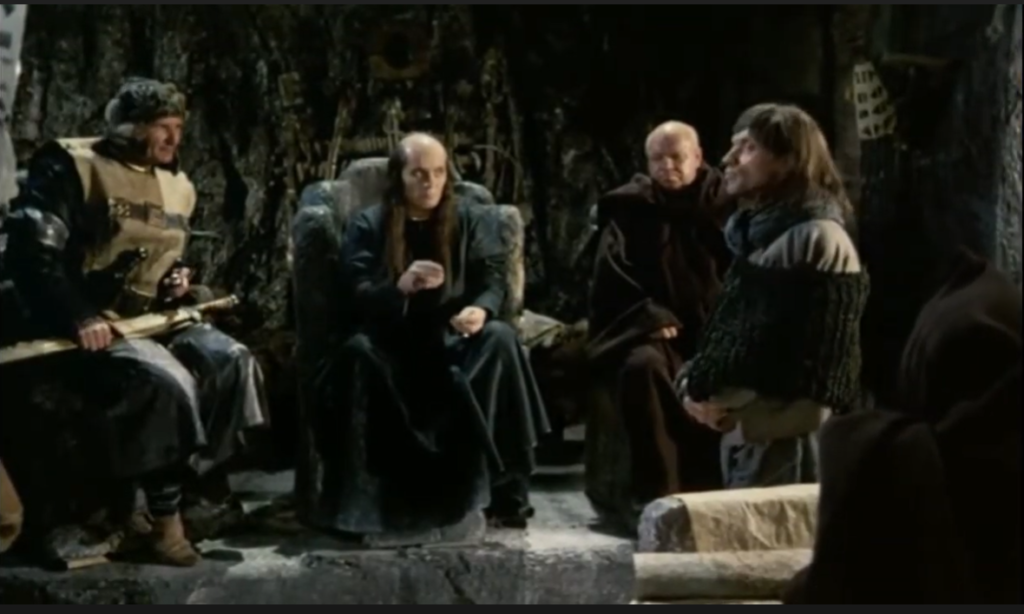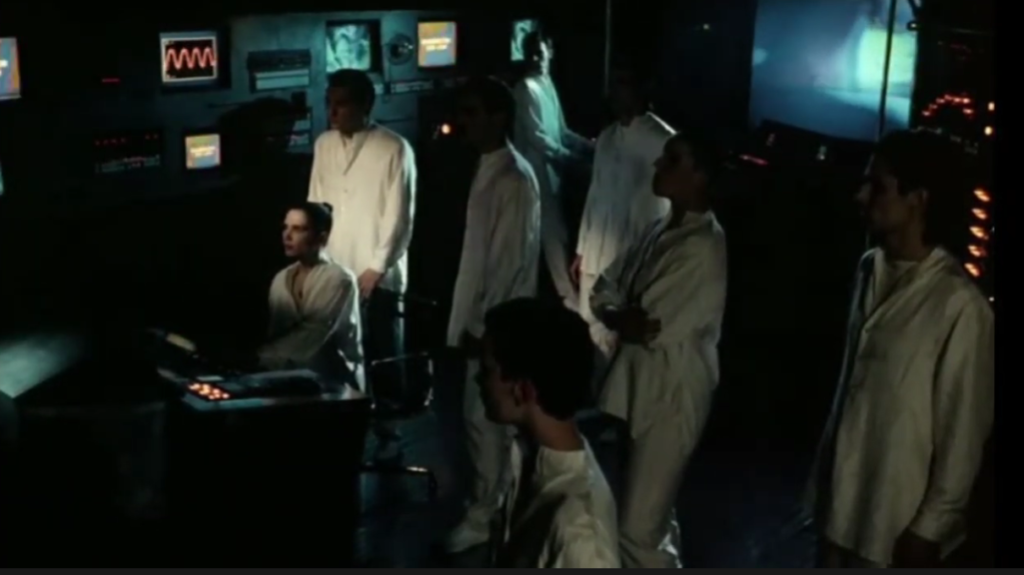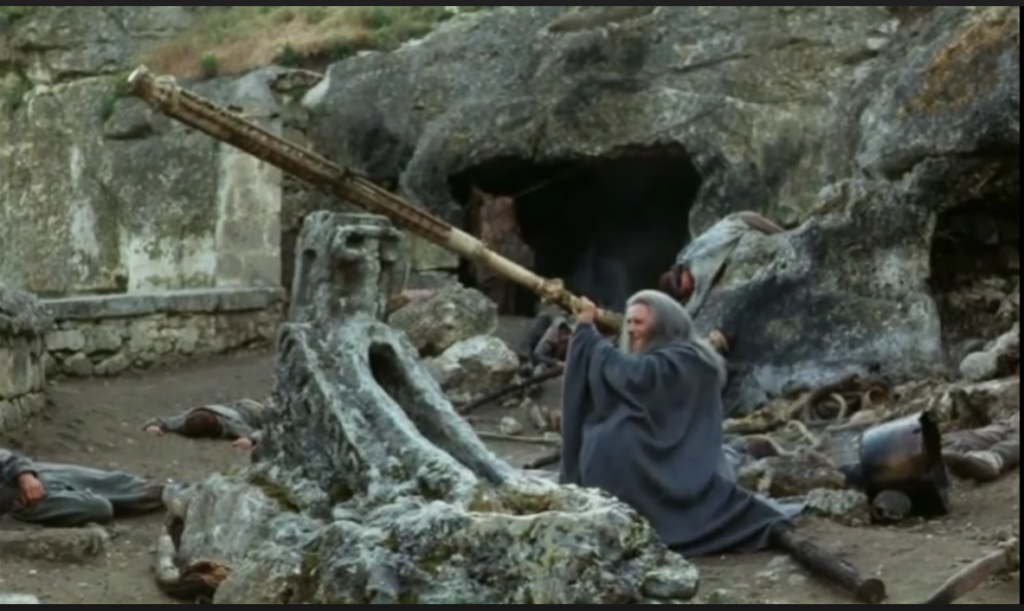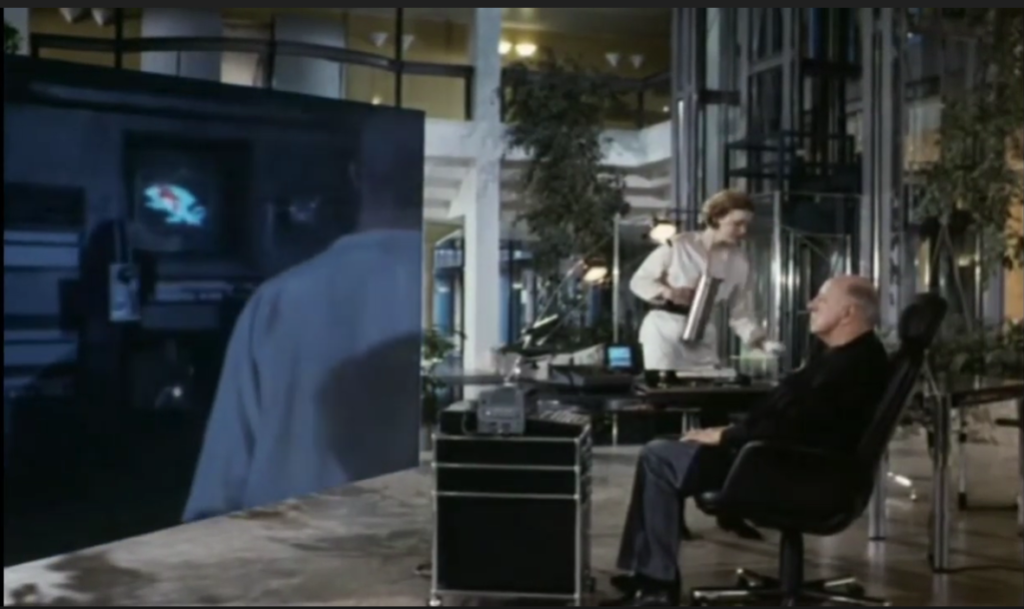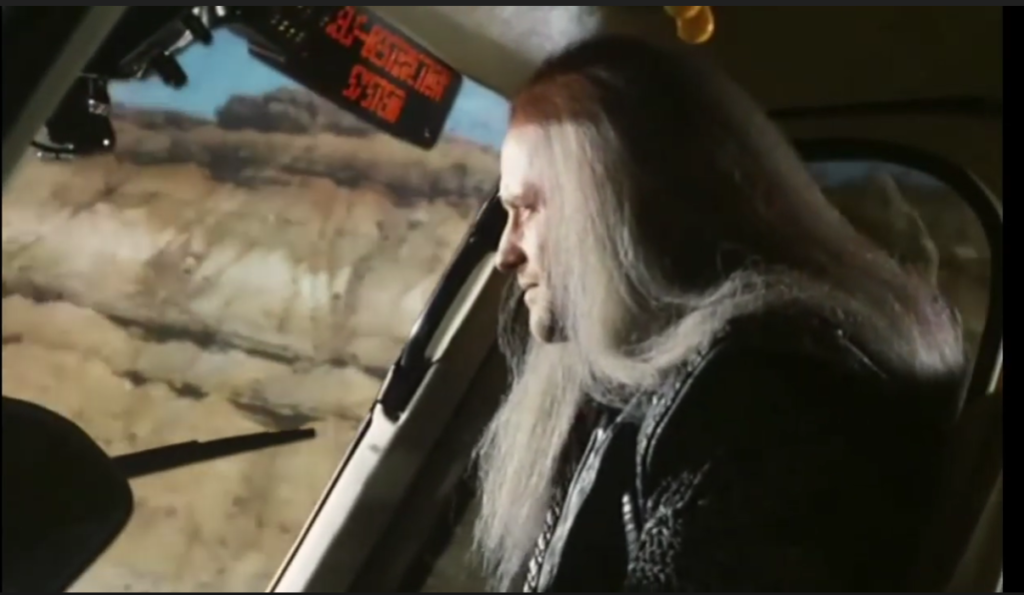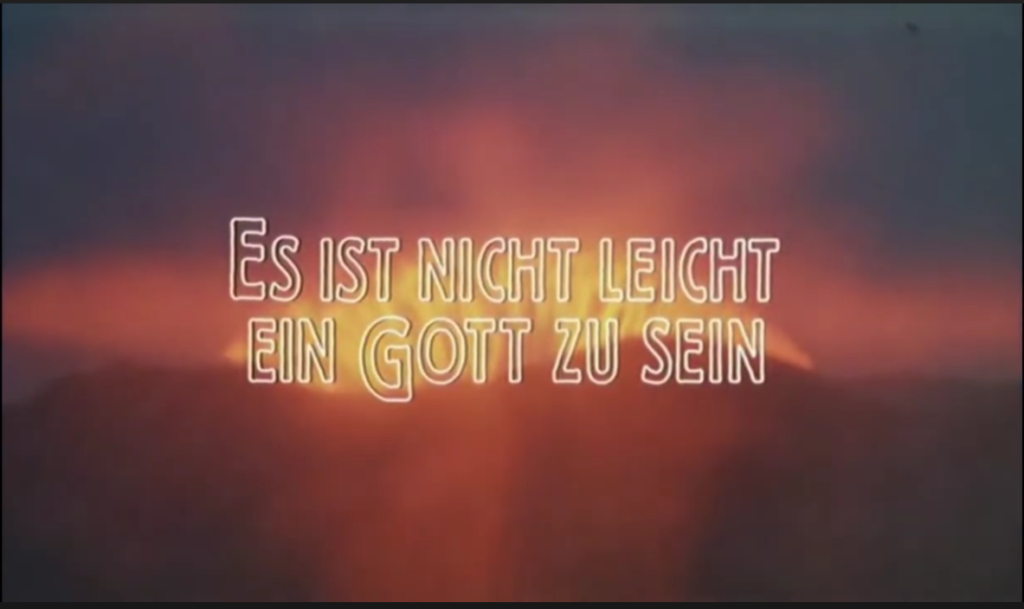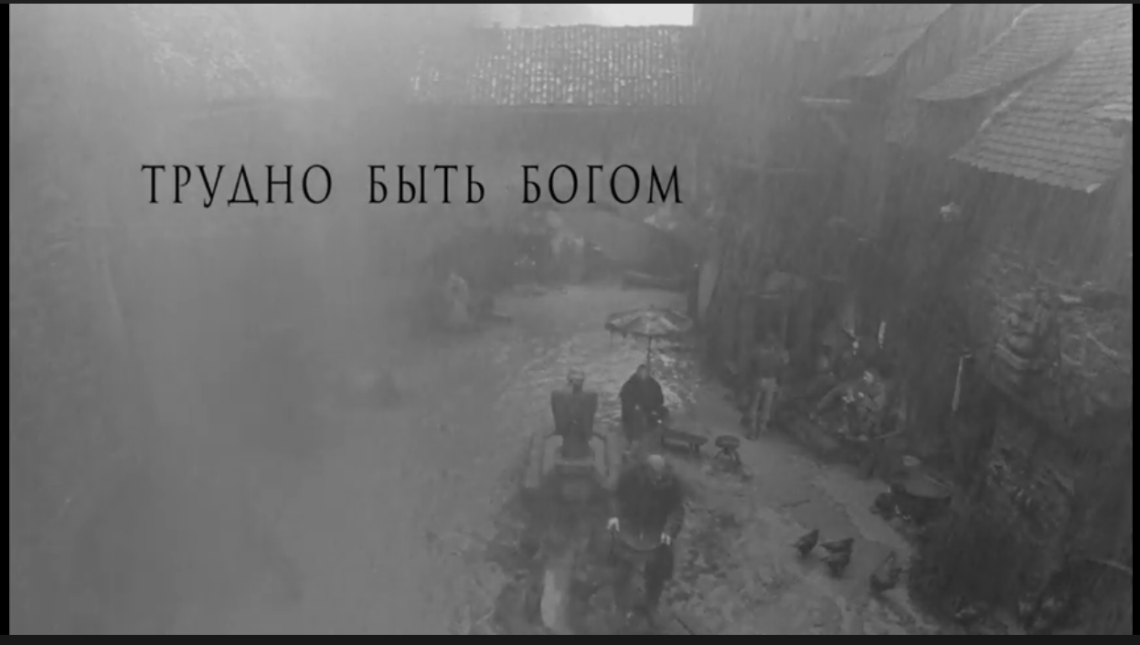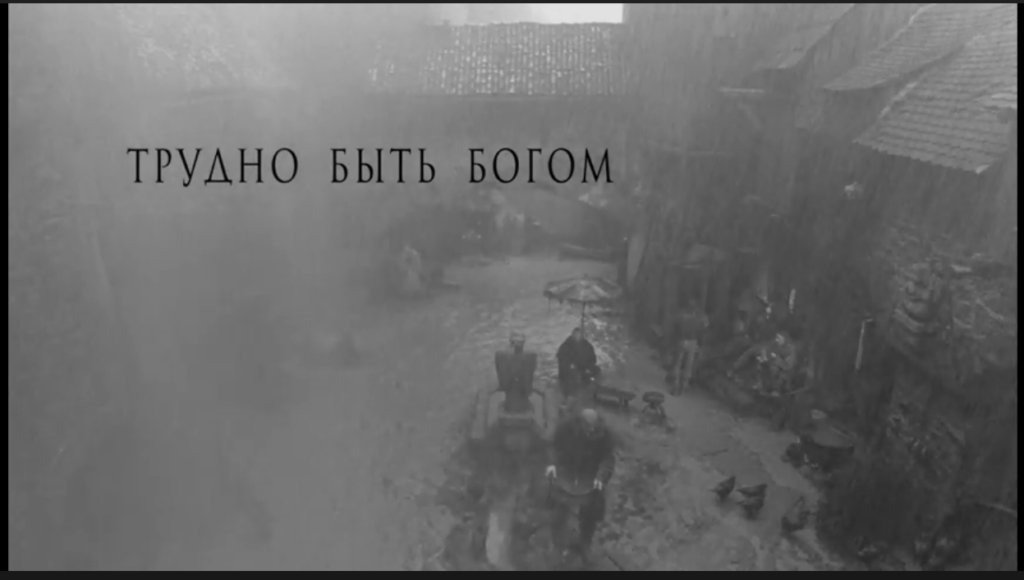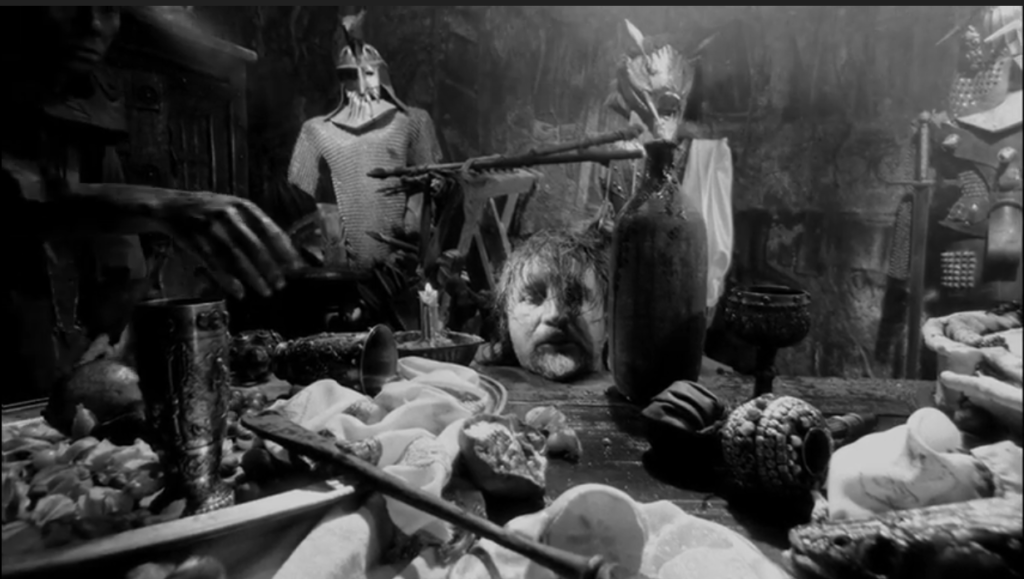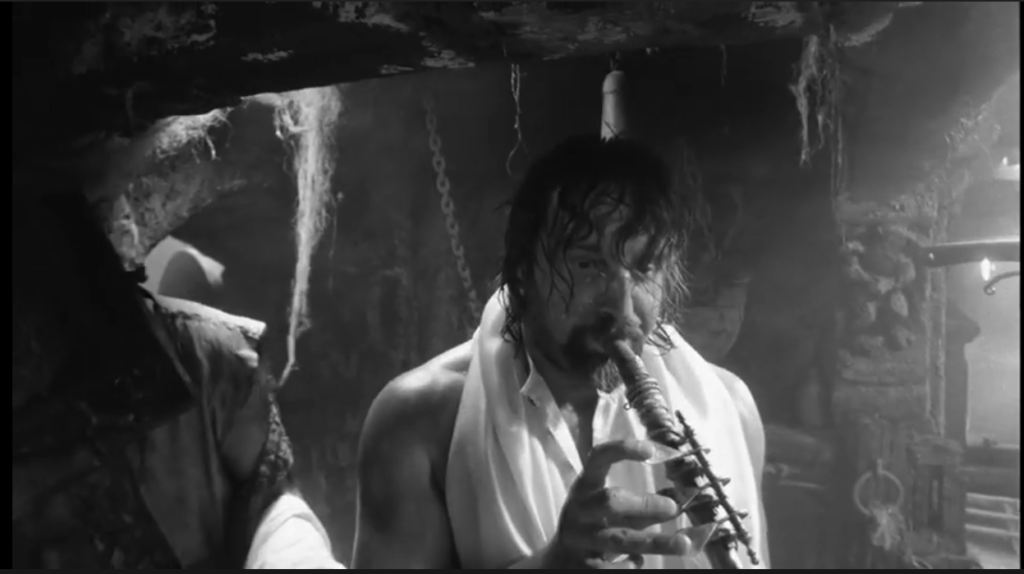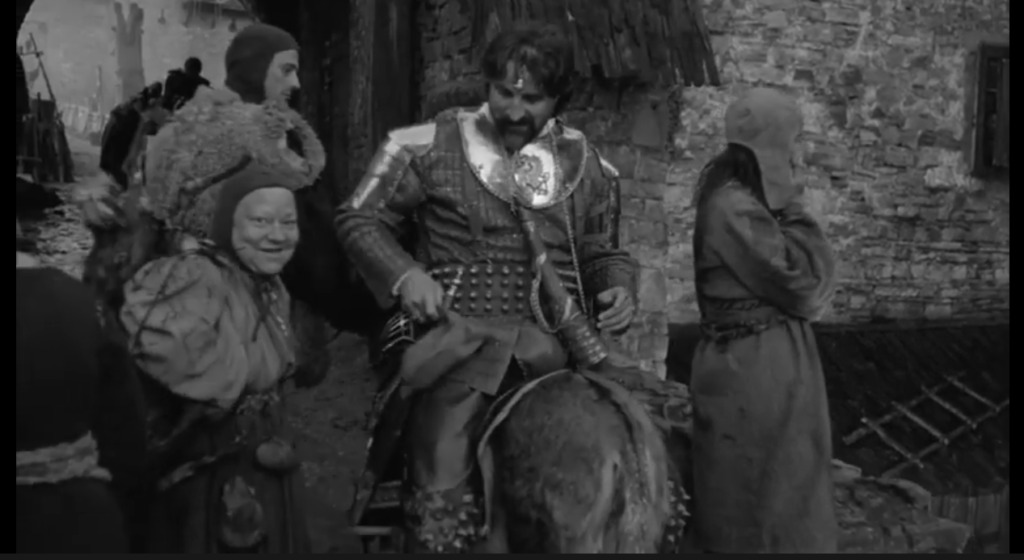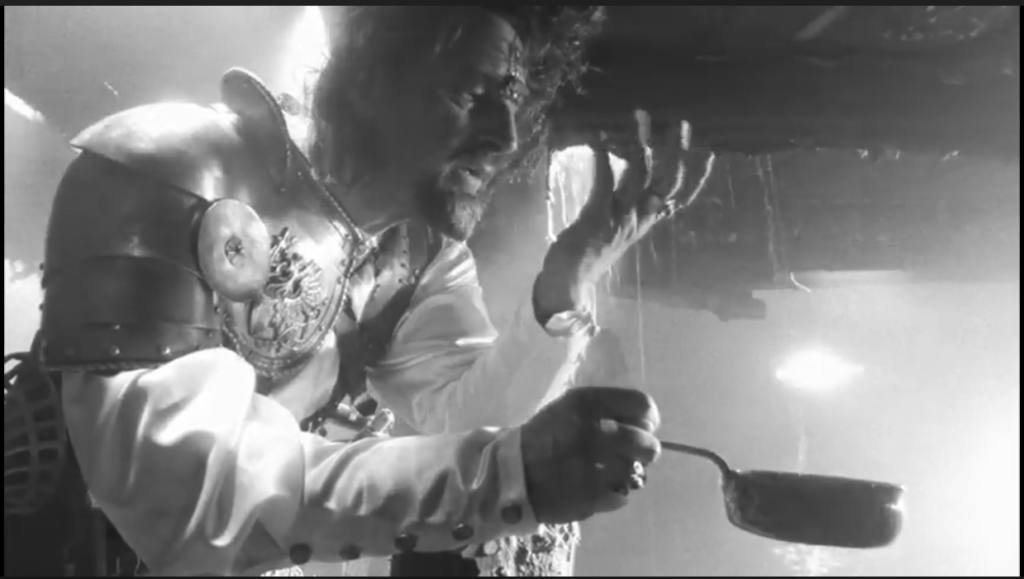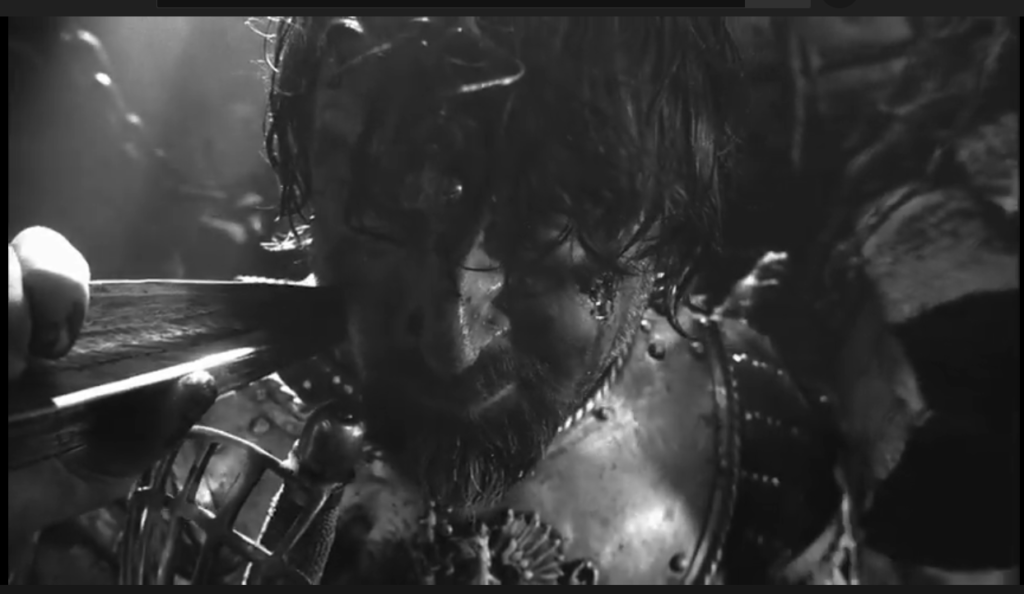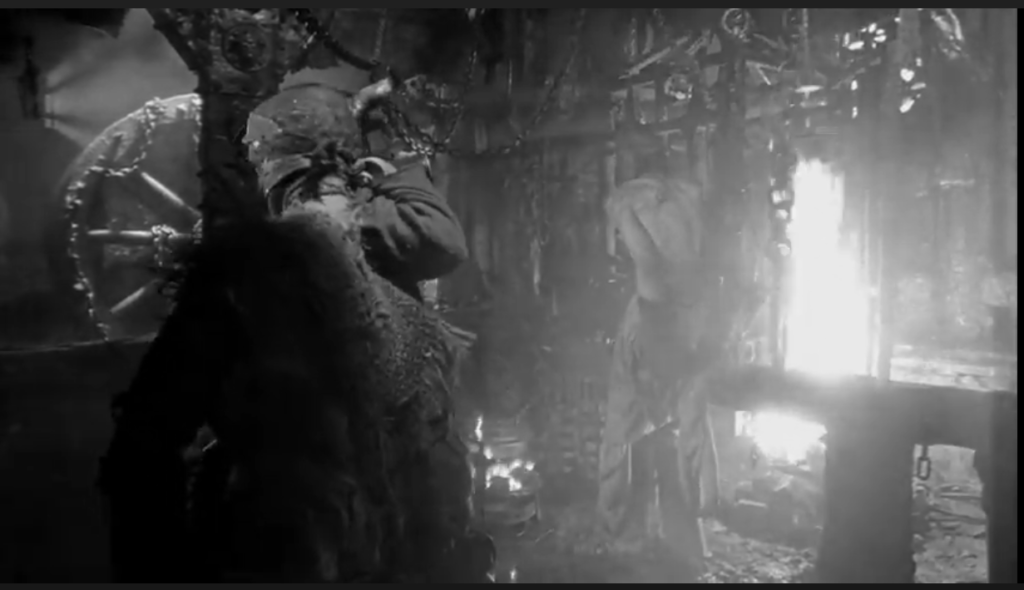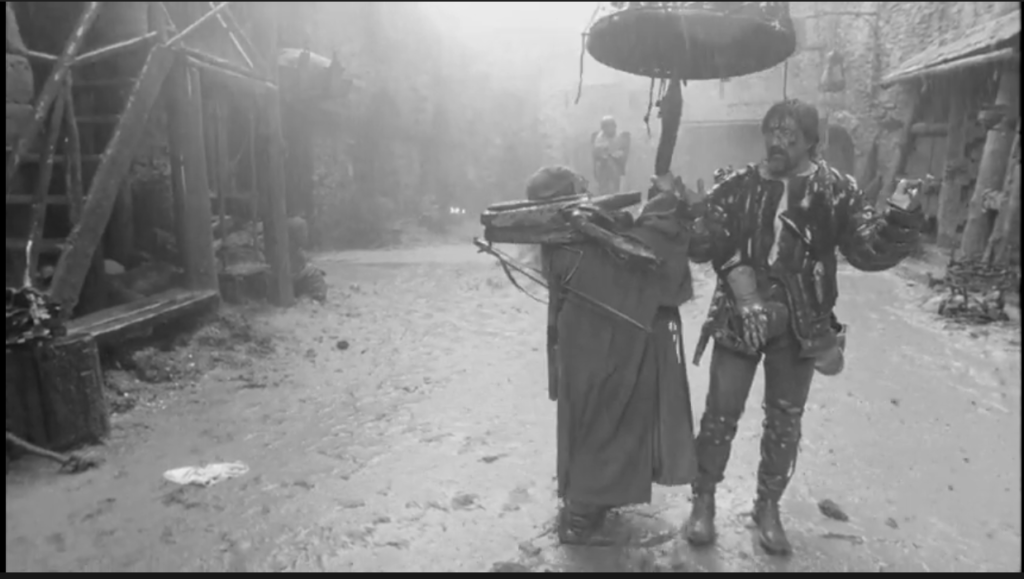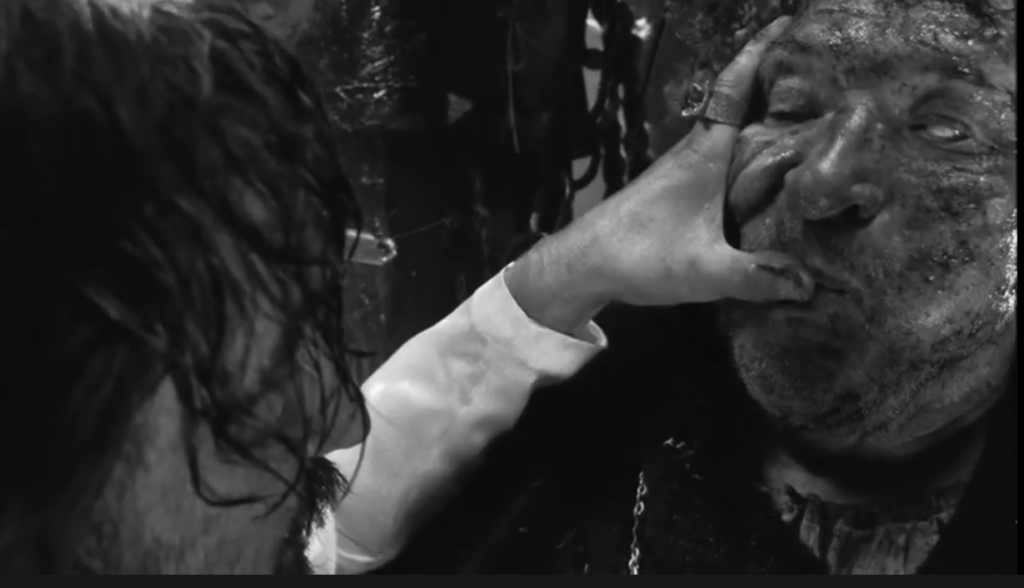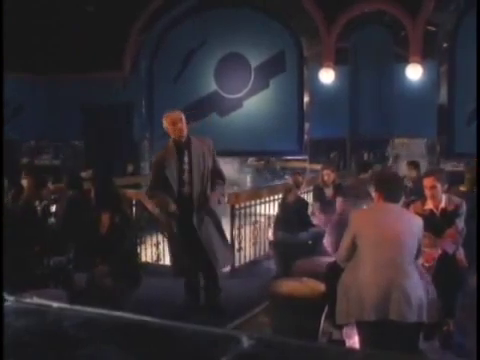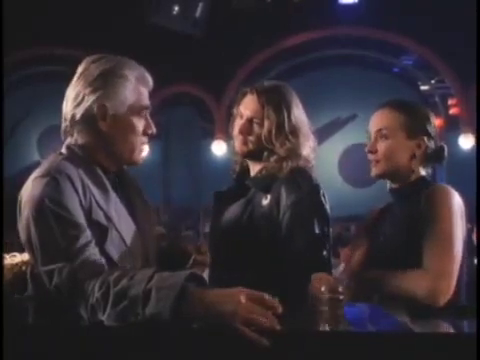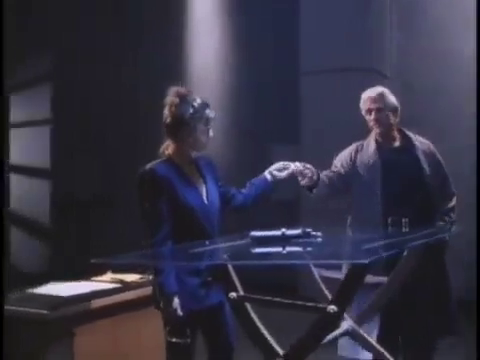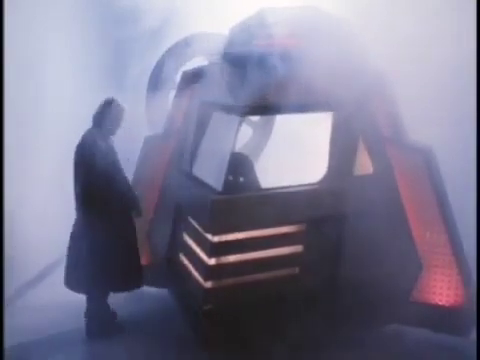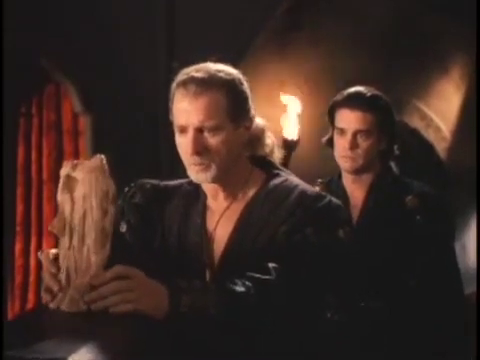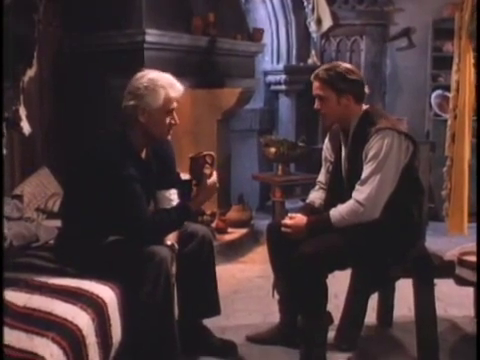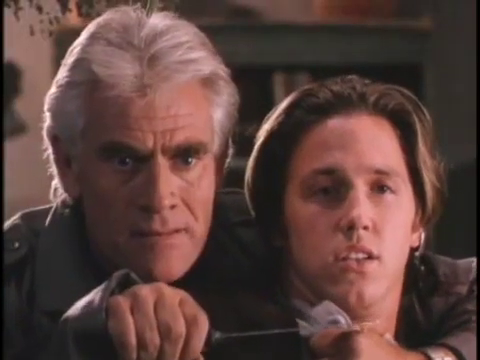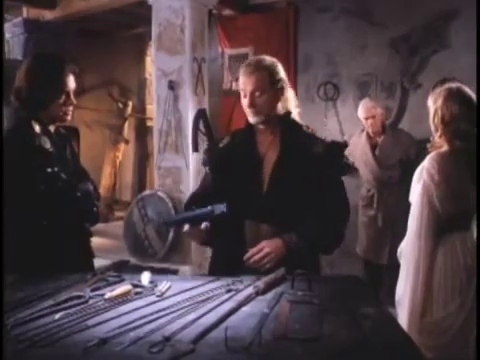-
#482 – The Almighty Tycoon of the Ninja (2008)
The Almighty Tycoon of the Ninja (2008)
Film review #482
Director: Aris Kaplanidis
SYNOPSIS: Yakinthos, also known as the Ninja Tycoon, is battling evil corporations and cyborgs in order to avenge the death of his parents and wife. he must battle an evil conspiracy to destroy him and save the world when he gets a chance…
THOUGHTS/ANALYSIS: The Almighty Tycoon of the Ninja is a 2008 Greek comedy martial arts film. From that description alone, you can probably guess this film is going to be bonkers. Let’s try and explain the story here: Yakinthos is a tycoon whose parents, themselves tycoons, were killed, along with his wife (this guy can’t catch a break can he?). Now it is Yakinthos’s turn to get revenge, and he is prepared to go through an army of robot ninjas to get it. That is basically the story…I think. This is only the second film I’ve reviewed which I could not find English subtitles for (the other being the Soviet version of A Connecticut Yankee in King Arthur’s Court), so the intricacies of the plot are lost on me; but I’m pretty sure there really aren’t any intricacies, as the film is very much a straight up homage and parody of classic martial arts movies, and all you need to know is who the hero is, who the villain is, and that the hero is going to trash an army of robot ninjas. There’s some semblance of a typical three-act structure that gives the film a decent flow, and there’s plenty of action and silly visuals to be entertaining. It’s never going to convince you it’s not just a student film filmed with a handheld camera, but there’s some gags and such that come out of nowhere that will fully take attention away from that; like why does Jesus suddenly turn up in a scene? I’m not sure even if I understood the dialogue I would be able to make sense of it (and to be honest, it’s still pretty funny without the explanation).
The film constantly feels like a student movie; not only with the film being mostly shot on a handheld camera, and in abandoned warehouses and people’s homes, but also in the fact a lot of the cinematography is a mixture of techniques film students probably learn, and the film just throws them all in to demonstrate they can do them. This would perhaps be an issue in a film that was intended for mainstream audiences or had a serious story to tell, but The Almighty Tycoon of the Ninja is just a bit of harmless fun that can get away with doing anything and everything it wants. It’s also worth pointing out that the choreography in the fight scenes is actually pretty tight. It does feel a bit too scripted and fake sometimes, but the whole film feels that way, and that’s part of it’s appeal. Also the film uses famous songs it clearly does not have the licence or permission for, and I can appreciate the film just doing whatever it wants without any regard for its own limitations.
Overall, it’s hard to be too harsh on The Almighty Tycoon of the Ninja: it sets out to make a very certain kind of film with no budget, and given that initial framework, it pulls off something absurd, over-the-top and fairly entertaining, even if it’s difficult to work out what is going on. The plot is pretty simple, but follows a trajectory and has enough structure to keep the film together. The characters are fairly distinguishable, and have enough personality to identify them. Despite the lack of budget and equipment, there’s a hidden degree of competency in its cinematography and choreography, but it definitely feels like a student film that’s showcasing a range of techniques without much curation. No matter the criticisms that be brought up though, it always knows that it’s a bit of satirical, silly fun that isn’t afraid to go overboard without fear of breaking all those filmmaking tropes and techniques it clearly knows. It’s not a film you need to watch, but if you somehow find yourself sitting through it and you’re not looking for anything serious, you can probably enjoy its humour even without the subtitles.
-
#481 – Hard to be a God (1989)
Hard to be a God (1989)
Film review #481
Director: Peter Fleischmann
SYNOPSIS: On an alien planet much like Earth, a society is undergoing a period of oppression similar to that of the middle ages of Earth. A group of scientists have been sent to observe this society, and study this event as it unfolds, with strict orders not to kill. Richard, one of the scientists, heads into the city of Arkanar as an observer, but he and his fellow observers find that staying out of the troubles of the inhabitants is more difficult than anticipated, and brings them face-to-face with emotions and feelings that humanity itself has lost…
THOUGHTS/ANALYSIS: Hard to be a God is a 1989 science-fiction film based on the 1964 novel of the same name. The film is set in humanity’s future, on an alien world where the civilisation is undergoing a period similar to Earth’s middle ages, and the rulers are cracking down on any inventors, artists, or scholars which may result in society moving into a Renaissance-era progression of society. In orbit above the planet, a human ship observes the settlement of Arkanar, and monitors a group of observers they have sent down to the planet. One such observer, Richard, takes on the identity of Rumata, a nobleman who was unknowingly to the citizens of Arkanar killed some time ago. With this identity, Richard/Rumata is able to observe a lot of the city freely, and also attempt to safeguard the scholars etc. that are being hunted. The plot centres around “Rumata” as he mingles in with the various residents of Arkanar; from the royal court to the common man, and the plot hinges on Richard becoming aware that it is impossible to remain neutral or observant when he is covered in the dirt of the city and the unguarded emotions of its people. The film proceeds very slowly through this scenario, and it is a very simple one that fills the two hour runtime by slowly immersing the viewer in the mess of the world that the humans are sent to observe. It is difficult to follow at points, but also that seems to be the point; that the struggle of daily life on this planet doesn’t neatly resolve itself into a smooth narrative.
Unlike the 2013 adaptation of the novel, here we get a glimpse of the spaceship and the state of humanity. It seems that humanity has “evolved” to a point where it has risen above the feeling of emotions, and as such look down upon the state of Arkanar as primitive and very much behind them as a society. As the film progresses, some of the scientists, who watch through a video feed implanted in Richard’s eyes, begin to feel emotions they have never experienced. It’s not the main focus of the film, but it is a neat little touch that shows how being a detached observer, as a human being, is not as easy as deciding to throw away your emotions, and that they always have the possibility of returning without control. The characters become familiar and involved with the story as the viewers do, and so when it is time for them to get involved beyond the observer role and help out the people they have lived among. I wouldn’t say it pulls this off in a perfect way, but it does enough to build up the story and setting to make this pay off. There’s some characters which don’t have that serious tone and “feel” like particular characters (the King, for one), and so I’m left wondering just how serious a viewer will take the film with some of these very stereotypical character tropes and bizarre hairstyles.
Production-wise, the film is fairly well put together: Arkanar has a distinct look and feel to it, even if its aesthetics of being shot in a desert seem very reminiscent of a lot of other films. The sci-fi elements are not the main focus, but the props and sets we do see are serviceable, if unremarkable (again, they are not the focus, so this is a good thing). With regards to making the environment look like a dirty, medieval setting, there’s effort put into getting the scenes and props right, and there’s a certain level of dirt but it does feel a bit uneven. Sometimes everyone is a bit too clean, and there are some moments when the gore comes out of nowhere and instantly unsettles the mood. I can think of two such instances: a decapitated head, and one part where a live pig is cut open and killed. I really hope that pig was a prop, but it definitely looked real…anyway, maybe I may be judging it a little harshly in this regard because the 2013 version does such an elaborate job in making the film visceral and filthy that this version can only look bad by comparison. The soundtrack, with it’s synth-heavy sounds, definitely places it in a certain moment in time, and while it’s not bad, it certainly ages it. Overall, Hard to be a God is a fairly average film with some stand-out and memorable moments, but they are few and far between across the two-hour runtime, and the plot ultimately fails to put down roots to dive the film direction and purpose. Not a bad film, but in terms of fitting the mould of cinema, it’s going to be a bit difficult for some viewers to get into.
-
#480 – Hard to be a God (2013)
Hard to be a God (2013)
Film review #480
Director: Aleksei German
SYNOPSIS: On another planet, the civilisation there is undergoing a period of time similar to the Earth’s Middle Ages. However, this civilisation has not undergone a Renaissance period, and those intellectuals, scholars and artists that would bring it about are mercilessly hunted down by the Order, who rule over the people. A group of Earth’s scientists are sent to the city of Arkanar on the planet to observe how this civilisation develops, with orders to not interfere with the society and to keep their mission secret.
THOUGHTS/ANALYSIS: Hard to be a God is a 2013 Russian sci-fi epic, based on the 1964 novel of the same name. The film centres around the city of Arkanar on an alien planet, where a Middle Ages civilisation is diverging from Earth’s history, and any attempts at a Renaissance-era is being snuffed out by the ruling Order, which is arresting scholars, intellectuals and artists that may bring this new era about. A group of scientists from Earth are sent to observe this society with orders not to interfere or kill anyone (very Star Trek prime directive, although the original novel came out a year or two before the original TV series). One scientist has taken the guise of Don Rumata, who claims to be the son of a local God, and smuggles the intellectuals that the Order are hunting safely out of the city. The story of the film is…a bit difficult to follow, but at the same time, there isn’t too much to follow. There’s the elements of the Earth scientists, which doesn’t really influence the plot; partly by design, as they are not allowed to interfere. Also the setting of the medieval town itself does not lend itself to a cohesive narrative, with swathes of people just trying to survive amid the filth and fear they are living through, gives the film little direction. This again, however, is by design, as the film really hinges on being able to portray the mess of medieval society, unguided by the scholars and artists. The film definitely echoes the old Soviet Union epics, particularly Tarkovsky’s Andrei Rublev, also filmed in black and white. At nearly three hours, it is definitely an endurance piece, and without that direction that a definite story would typically give a film, the viewer becomes increasingly pulled into the mire of this society, which is obviously the film’s objective. It’s definitely not for everyone, but the film clearly has a very specific ambition and vision, and for the most part, it fulfils said vision with notice effort being poured into all aspects of it.
What makes this film stand out is how the setting is brought to life: this medieval city is absolutely covered in filth and dirt: the people wade through mud everywhere they go, their faces smeared with dirt and blood, and an absurd amount of corpses and entrails hang from the ceilings and adorn the sides of the pathways. Every shot feels like it is considered and thought through: the shot is often obscured with detritus, or extras moving across the camera, constantly giving the impression of everything being claustrophobic, and it being impossible to avoid the filth of the film. Most scenes are long single takes, which must have taken considerable effort to pull off, especially considering the aforementioned amount of extras and objects the camera moves through. The only critique I would say in this respect is that sometimes the camera moves awkwardly through the scenes, but again, given how much is going on, it’s a technical achievement that this only happens very rarely. The film isn’t particularly gory, but instead focuses on this dirt and unhygienic conditions that immerse the viewer as any everyday occurrence, rather than moments of shock and violence. There are a few particularly gory parts, such as when we see someone’s eye ripped out (from behind their head anyway), and an open chest with a still beating heart in it, but these are few and far between: the choice of the film being black and white also somewhat mutes the gore, but in these particular scenes, it becomes incredibly visceral, even without the colour.
As mentioned, the story is almost lost amidst the immersion of the visuals: there’s so much going on visually and viscerally that following what the characters are saying and doing is very much a secondary concern. There’s no traditional sci-fi metaphor or influence either, other than we are told these scientists came from Earth on an observation mission. I suppose elaborating on these elements would detract from the vision of the film becoming immersed in this society. Reviews on this film typically praise the vision and ambition of the film’s production, but is much more divisive with regards to how it tells its story, and also how it portrays the Middle Ages; which certainly wasn’t devoid of scholars, art and beauty, but also definitely wasn’t the easiest of time to live through. I would generally agree with the consensus: that Hard to be a God is a film that aims to immerse its viewers into a dark, filthy and harsh world, and succeeds in doing so. Whether that is enough to immerse all viewers with a minimal story that is difficult to follow sometimes is another matter, but I think it succeeds in doing what it set out to do. If you like your epic art films, you’ll get something out of it; if you don’t, you might not last the whole three hours.
-
#479 – Trancers 4: Jack of Swords (1994)
Trancers 4: Jack of Swords (1994)
Film review #479
Director: David Nutter
SYNOPSIS: Jack Deth, an agent of the council, is travelling through time in order to wipe out temporal anomalies, after he eliminated the trancer threat. However, an accident while travelling through time leads to Jack travelling to an alternate dimension, where the trancers are terrorising the people of the land and feeding on their energy. Once again, Jack finds he has to deal with the trancer threat…
THOUGHTS/ANALYSIS: Trancers 4: Jack of Swords is a 1994 sci-fi film, and the fourth film in the Trancers franchise. On opening, we see Jack Deth, the protagonist of the franchise, working with the ruling council after eliminating the trancer threat in the previous film, and now travels through time to preserve temporal order. On his way through time for his next mission however, an incident in the time machine causes him to instead land in an alternative dimension or parallel universe (it’s not really explained) where trancers are again terrorising people: this time a medieval kingdom, and Jack must once again deal with them. The Trancers franchise is – as I have said in previous film reviews – a fairly low budget affair that you don’t need to take too seriously, drawing influence from franchises like Terminator and Blade Runner, but never having the polish or just general quality they do, alongside not providing something original that sets it apart. The premise of travelling back in time to inhabit the bodies of your ancestors is a cool premise, but hasn’t really been explored since the first film, with the films falling into very generic action films and away from the cool sci-fi noir it set out with.
With that in mind, let’s look at where Trancers 4 has taken us: while the film begins with it’s typical sci-fi setting, the majority of the story takes place in this alternative dimension with a medieval fantasy setting. This is obviously quite a departure for the series, and it doesn’t suit it at all. The plot is basically a Robin Hood type affair, with Jack Deth working alongside the “tunnel rats” peasants of the kingdom who are rebelling against the lord of the land, who is a trancer…but also a vampire? Since Deth destroyed all the trancers in the previous film, why they’re now showing up in parallel universes feeding on people’s life energy like vampires is never explained and simply makes no sense. This really is a departure for the series, and it is quite odd that it took this direction; although I feel like the series has been running out of ideas since the first one, so just throwing Jack Deth into an unrelated medieval fantasy is one way to solve that problem, rather than building on what has already been established I suppose. The story itself is a typical “fish out of water” affair with Deth coming to terms with the world he has found himself in, and the locals being amazed at his technology and the like. It goes exactly like you would expect, except you would never expect the series to go in this direction.
None of the previous characters return from the previous films apart from Jack Deth, which again shows just how unrelated and disjointed the series has become. Deth himself, Still played by Tim Thomerson, is the same odd mix of action hero, noir detective, and quirky rebel: he’s equally likely to swear and get serious as he is to make a quick one-liner. In one sense, his character is all over the place, partly due to the fact he is an amalgamation of tropes and characters from other (better) films. Alternatively, this unpredictability is strangely endearing, as you never know just how he is going to handle a situation, so you just have to keep watching. Deth is obviously not a great person: he keeps getting his partner’s killed, he is rude to everyone, and is constantly trying to seduce women that are way younger than him. Thomerson does, however, do a good job of making the character flawed, but likeable. The rest of the characters aren’t of any particular consequence, and they are barely worth a mention as they fill out very typical and predictable roles.
The production and design are very much a mixed bag: some of the futuristic props are nice, but the sets in the future seem to just be empty warehouses with no sense of place. The setting of the fantasy parallel universe world looks as you would expect, and offers few surprises. The action scenes aren’t amazingly choreographed, and filled with stock sound effects that are just thrown in without any mixing or editing. Trancers 4 is a strange turn in a series that is already full of strangeness: the story and setting is very typical, and doesn’t fit in with the franchise, and doesn’t add much to it. The character of Jack Deth is still this weirdly interesting centre of attention that is entertaining enough, but everything that surrounds him just is not of interest.

